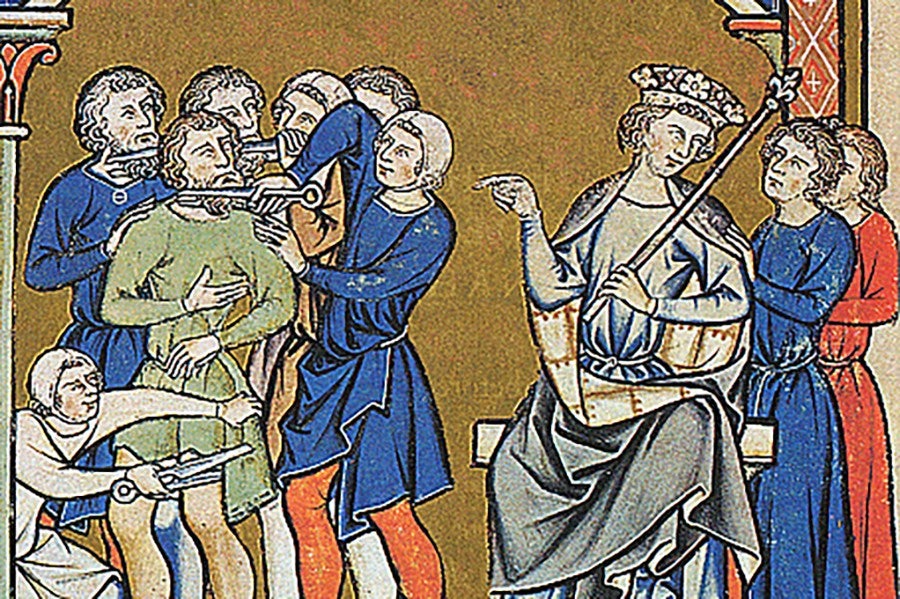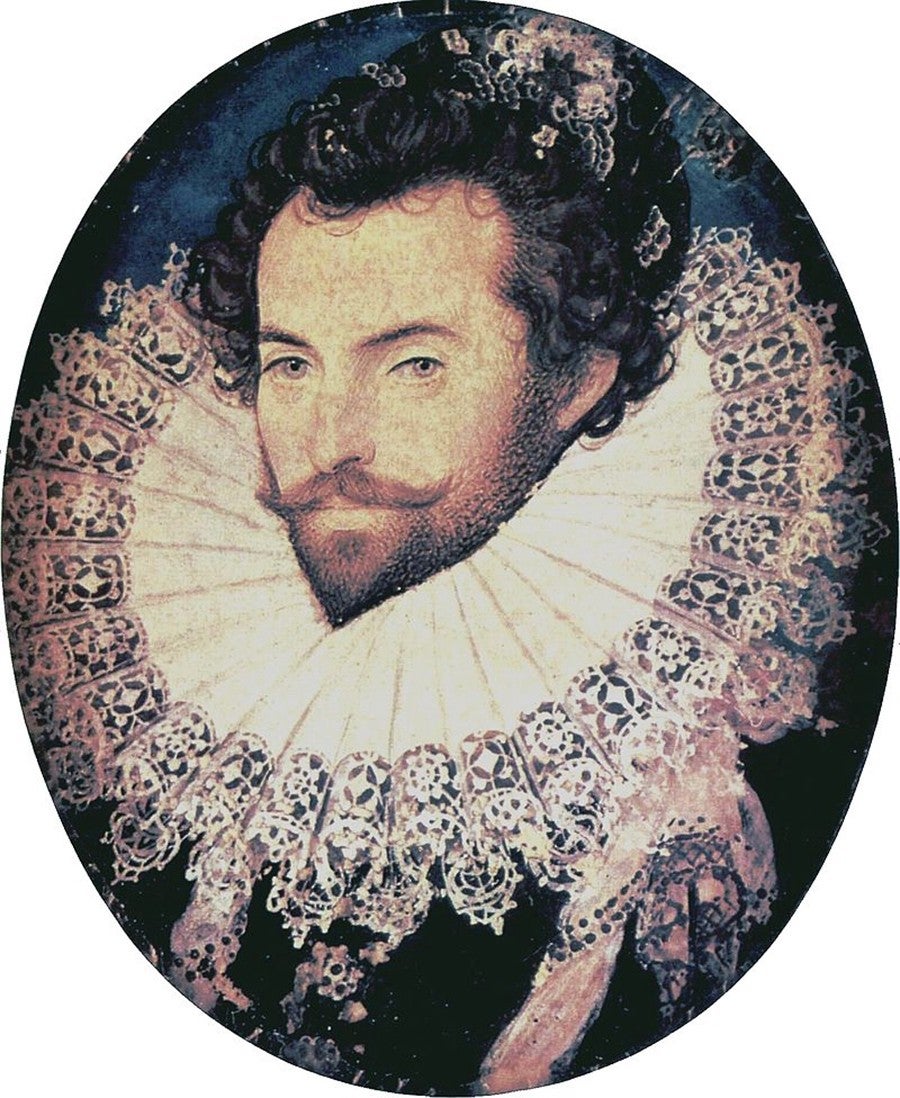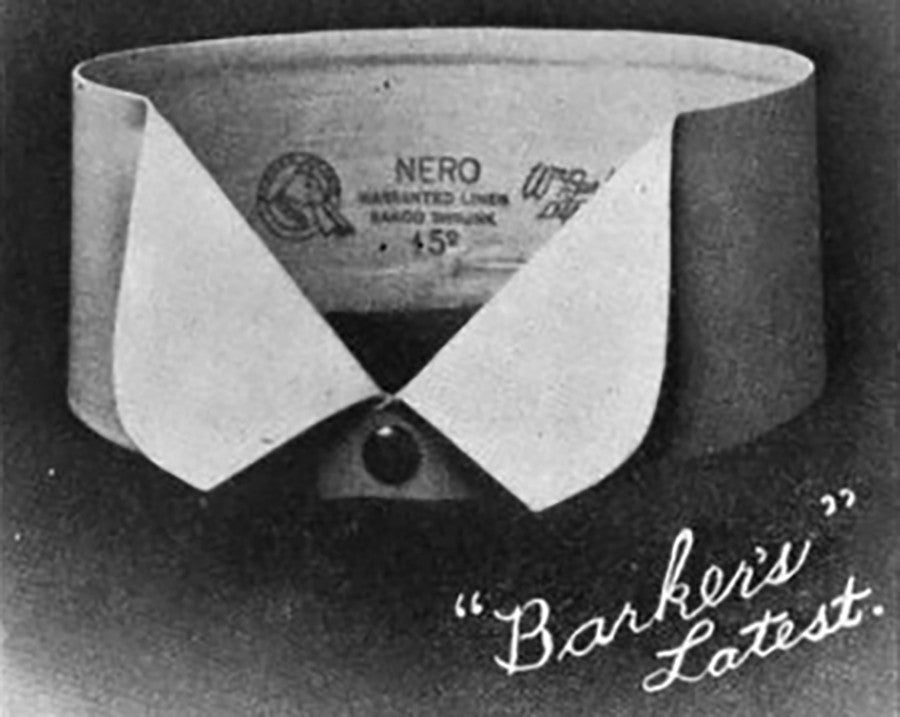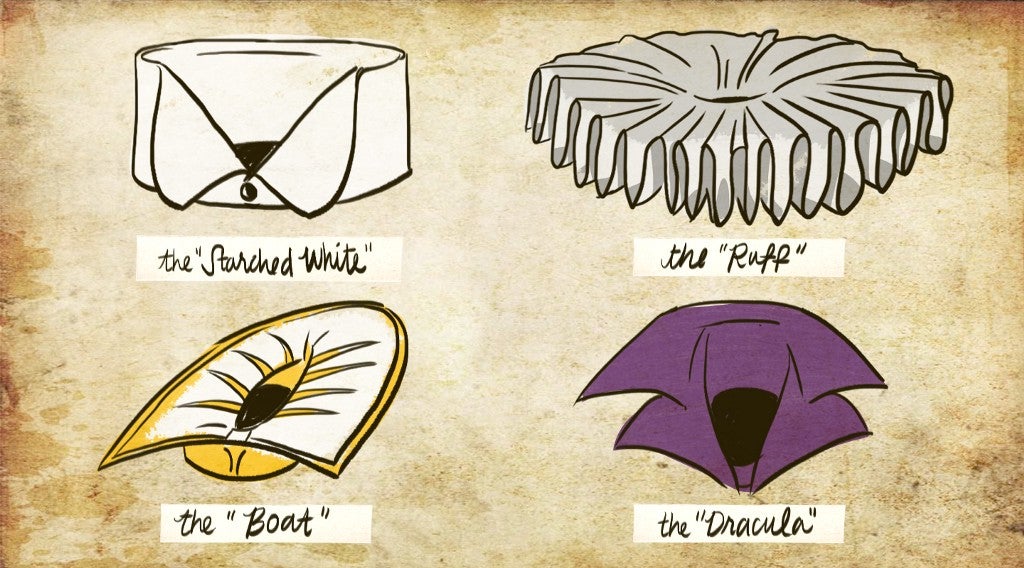For an essentially unnecessary piece of fabric around your neck, the shirt collar can be a surprisingly meaningful feature. Can a bro truly bro without a popped polo-shirt collar? Is an obscenely wealthy man really dressed up if he doesn’t have a starched collar, as pure white as snow before a dog has peed on it? And really, if someone asked you to draw William Shakespeare right now, the most recognizable thing about him would probably be that XXL collar that makes it looks like Will got so frustrated with writing, he stuck his head through a piece of paper.

Despite our modern association of epic shirt collars with old-timey garb, collars didn’t really show up in the Western world until the mid-1400s. As Sarah Lorriane, an art and fashion historian who writes and talks about historical fashion for Frock Flicks told me in an email interview, “Up until the mid-15th century, menswear tended to have necklines that varied from the base of the neck to what we modern people would call a ‘boat neckline,’ or scoop neckline, and likewise, their undershirts kept a similar profile.” As an example, Lorraine points to this painting from the 1200s where, according to Wikimedia, “Hanun humiliates David’s ambassadors, by having their tunics and beards slashed.” I take this to mean that nobody would’ve wanted collars in the 13th century anyway because they would’ve just been cut off with what appear to be the 1240 version of those oversized ceremonial ribbon-cutting scissors.

Standing collars began appearing on both shirts and undershirts in the mid-1400s. Lorraine notes, “This continues into the extreme in the 16th-century with the evolution of the neck ruff,” a collar that’s unattached to the shirt and that you might recognize as the thing you think of when you think of an overwrought historical collar.

The ruff in the 1500s just like wearing a $10,000 watch today: unnecessary fashion that displayed your status (although the ruff was probably harder to steal). The ruff revolution happened thanks to new advances in starch, which is used to give clothing crisp lines. In 1564, a starch-savvy Flemish woman named Mistress Dinghen van der Plasse fled Flanders for London, and brought with her a starch recipe that was far superior to anything being used in England at the time. (Just like a good glass of water or urine, van der Plasse’s starch was clear and granule-free.) That’s when the ruff really took off.
As Ian Mortimer wrote in The Time Traveler’s Guide to Elizabethan England, “At the height of the craze, in the 1580s and 1590s, ruffs are made up of up to six yards of starched material, with up to 600 pleats in them, extending eight inches or more from the neck.”
But not everybody appreciated the new look; an 1890 issue of Magazine of American History has this quote from John Stowe, writing around 1585: “The fashion in London was called the French fashion; but when Englishmen came to Paris the French knew not the fashion, and in derision called it the English monster.” (Side note: Somewhere, right now, a man is calling his dick “the English monster.”)
Ruff madness didn’t last terribly long; ruffs were difficult and expensive to maintain, even if they did give 1600s dudes that hot cone-dog look. The cravat — the precursor to the necktie, basically — came into fashion, and collars calmed the eff down. Lorraine points out that the change…
…paralleled an ideological shift in Europe known as the Enlightenment, which happened during the mid-17th century and carried on through most of the 18th-century. Philosophers such as Jean-Jacques Rousseau championed an ideal man who was unencumbered by the whims of artifice and who was dedicated to realizing his “true nature” — which in fashion terms meant favoring clothing that was simple and tasteful and not the gaudy and extreme fashions favored by the upper classes and fashionable elite.
Another pragmatic evolution of the collar occurred in the 1830s, when the detachable collar was “invented.” That’s in quotes because the ruff was also a detachable collar, after all. But this time, the detachable collars were simply normal shirt collars like you’d see today, but sold separately from the shirt itself.
The detachable collars were a way to do something that you probably did this very week: avoid laundry. Because collars and cuffs were both the most visible parts of shirts and the parts most likely to get dirty, separating them allowed people to do the shirt equivalent of only washing your armpits after you go to the gym. Plus, according to An Uncommon History of Common Things, that meant that “the main body of the shirt could remain soft while the collar and cuffs that were ‘seen’ could be starched and shaped in many ways.”
Not all collars were detachable during this time, but the era of the detachable collar is my favorite era of collardom simply because of ads like this, where collars float alone alongside earnest text as if shirt went to clothing heaven but the collar got sent to limbo:

The popularity of detachable collars and starched collars in general began to fade in the 1920s and 30s. As G. Bruce Boyer writes in True Style, “Beginning in the 1930s… the stuffed sausage look began to change. Central heating, lighter weight fabrics, and a more relaxed social attitude all contributed to making men’s clothes more comfortable.”
He also quotes a great passage from the Duke of Windsor’s memoir, where the Duke says “we began to find that with the double-breasted dinner jacket, a soft collar looked just as neat as a stiff one, and by the 30s we were all beginning to ‘dress soft.’” And in 1933, tennis player René Lacoste began manufacturing the item that we now recognize as the calling card of dads and douchebags, the polo shirt. (He got the idea from the shirt worn by a polo-playing friend — hence the name.)
Incidentally, around this time is also when “white collar” and “blue collar” began to creep into the vernacular, according to Forrest Wickman at Slate. He points to a line in 1910’s Nebraska Weekly News Journal about a man who “had the good sense to leave a cheap, white-collar job, deny himself fleeting luxuries, take up the cross, and follow — the plow,” and notes that “blue collar” came into its own in the 1930s. The distinction had to do, again, with laundry — workers at desk jobs could keep their white shirts clean, but people with dirtier jobs favored darker fabrics that hid dirt more easily.
“Dressing soft” is now more acceptable than ever — living in sweatpants 24/7 is a reality, not a joke, thanks to things like dress sweatpants. But there’s still an elegant magic to a starched shirt collar, and now that laundry is easier to do than ever before, we’re probably due for a fancy collar resurgence. Because if we’ve learned anything from Shakespeare (other than, y’know, thousands of lessons about human nature and writing), it’s that a bold collar can do a hell of a lot to distract from baldness and bad facial hair.
